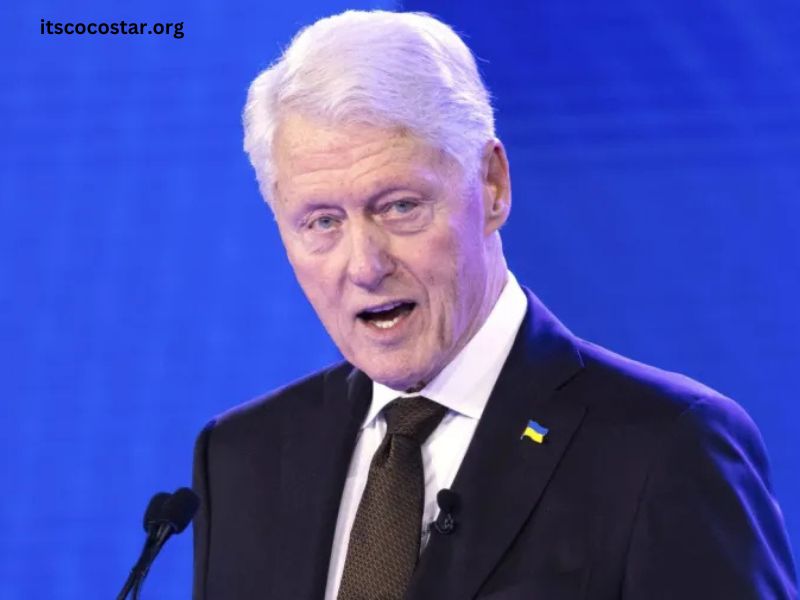The photo of Bill Clinton on August 19, 1994, holds a special place in American political history. Captured during a pivotal time in his presidency, this photograph encapsulates not just a moment in time but the dynamics of a critical period in U.S. politics. In this article, we will explore the significance of the photo, the context of that day, the historical importance of Bill Clinton’s presidency, and why this image remains iconic.
The Significance of the Photo: Bill Clinton on August 19, 1994
On August 19, 1994, Bill Clinton was in the midst of his first term as the 42nd President of the United States. His administration was characterized by a focus on economic reform, healthcare, and addressing pressing domestic and international issues. The photo captured on that day represents more than just a fleeting moment—it reflects a president at the height of his political career, making decisions that would shape the future of the country.
Bill Clinton, who took office on January 20, 1993, brought with him an agenda focused on revitalizing the American economy, reforming healthcare, and enhancing America’s role in global diplomacy. The photo of Bill Clinton on August 19, 1994, emerged at a time when he was pushing forward with key pieces of legislation, including the controversial North American Free Trade Agreement (NAFTA) and healthcare reform, which would dominate much of his presidency.
The Context of the August 19, 1994 Photo
To understand the importance of this particular photograph, it’s necessary to place it within the context of the events and issues surrounding that day. In August of 1994, Clinton was dealing with several major challenges, both on the domestic front and internationally.
1. The North American Free Trade Agreement (NAFTA)
One of the biggest issues facing the Clinton administration in 1994 was the passage of NAFTA, a trade agreement that aimed to eliminate barriers to trade and investment between the U.S., Canada, and Mexico. Although signed into law in late 1993, the deal was still controversial and faced significant opposition from certain sectors, particularly labor unions, environmentalists, and those who feared job losses due to outsourcing.
The August 19, 1994 photo may have been taken in the midst of these contentious debates, capturing Clinton’s unwavering stance on promoting free trade as a tool for strengthening the American economy and fostering international cooperation. This marked a defining moment in Clinton’s presidency as he navigated the complex world of global trade and international relations.
2. Healthcare Reform and the Clinton Health Plan
Another significant issue for the Clinton administration in 1994 was the introduction of the Clinton Health Plan. The proposed healthcare reform, spearheaded by First Lady Hillary Clinton, aimed to provide universal healthcare coverage for all Americans. The bill sought to overhaul the nation’s health insurance system, ensuring more Americans had access to affordable care.
However, the proposed reforms faced stiff opposition from conservative lawmakers, the health insurance industry, and even some Democratic members of Congress. Despite the administration’s best efforts to push the plan through, the proposal ultimately failed to gain enough traction. In the photo from August 19, 1994, Bill Clinton’s expression and demeanor may reflect the challenges he was facing in advancing this monumental piece of legislation.
3. International Relations and Diplomacy
On the global stage, Clinton’s presidency was marked by significant international developments, particularly in the Middle East and the Balkans. The photo of Bill Clinton from August 19, 1994, might also reflect the president’s involvement in these critical foreign policy decisions, which would ultimately shape his legacy.
For example, Clinton played a role in the negotiations that led to the signing of the Israel-Jordan Peace Treaty in October 1994, a key moment in Middle Eastern diplomacy. He also oversaw U.S. involvement in the humanitarian crisis in Bosnia and Herzegovina. These diplomatic efforts were a cornerstone of Clinton’s foreign policy approach during his first term.
The Legacy of Bill Clinton’s Presidency
The photo of Bill Clinton on August 19, 1994, represents a president whose administration would leave an indelible mark on the U.S. and the world. Bill Clinton’s tenure in the White House is remembered for both its successes and its controversies, but there is no doubt that the events of 1994 were foundational to shaping his political legacy.
Economic Prosperity and the Clinton Economy
Bill Clinton’s presidency coincided with a period of economic prosperity in the United States. Under his leadership, the U.S. experienced robust economic growth, a decrease in unemployment, and a budget surplus. This period, which came to be known as the “Clinton Economy,” was a hallmark of his administration.
The economic policies enacted by Clinton, including a balanced budget, welfare reform, and tax increases for the wealthiest Americans, helped create a climate that allowed for the longest period of peacetime economic expansion in American history. The photo from August 19, 1994, is likely to capture a leader who was both deeply focused on navigating these complex issues and confident in his economic vision for the country.
Political and Social Challenges
Despite his successes, Bill Clinton’s presidency was also fraught with political challenges. The healthcare reform failure, which began in earnest in 1993 but was effectively dead by 1994, was a blow to Clinton’s early agenda. However, Clinton did not allow this setback to define his presidency. Instead, he focused on other initiatives, such as the passage of the 1994 crime bill, which would provide funding for law enforcement and implement stricter sentencing laws.
Social issues like crime, welfare reform, and the growth of the internet economy would continue to dominate Clinton’s presidency throughout the 1990s. His administration’s approach to these issues would evolve, but the decisions made during this early period were critical to shaping both his political identity and his legacy.
Why the Photo of Bill Clinton from August 19, 1994, Is Iconic
The photo of Bill Clinton on August 19, 1994, is iconic not only because of its historical and political significance but also because of the emotions and expressions it conveys. Capturing the essence of Clinton as a leader in the midst of monumental political challenges, this image serves as a visual representation of the complexities and pressures faced by the president during that time.
For those interested in political photography, this image is an invaluable document of Clinton’s presidency. It showcases a man deeply engaged in the business of governance, one who was charting a course through uncertain waters while attempting to enact policies that would shape the future of the nation.
The image is also noteworthy because it is an example of how photography can capture pivotal moments in history. A single photograph can immortalize a moment, freeze it in time, and tell a story that transcends the boundaries of language and text. In this case, the photo of Bill Clinton on August 19, 1994, has become a symbol of both his strengths and challenges as president.
Conclusion
The photo of Bill Clinton taken on August 19, 1994, remains one of the most significant visual records of his presidency. Captured during a critical juncture in his first term, this image speaks to the complex, dynamic, and often turbulent nature of American politics at the time. It represents a president facing major domestic and international challenges, from the controversial NAFTA trade agreement to the failed healthcare reform initiative, all while trying to maintain control of a government teetering between progress and resistance.
Bill Clinton’s presidency, marked by economic prosperity and intense political struggles, would ultimately prove to be transformative for the United States. The photo taken on August 19, 1994, serves as a lasting reminder of the trials, triumphs, and turbulent moments that defined Clinton’s time in office, making it an iconic image for those interested in political history, American politics, and the art of photography.
Through this lens, the photo captures not just a moment in time, but the larger narrative of a leader who, despite facing numerous obstacles, shaped the course of American politics and history in profound ways.






